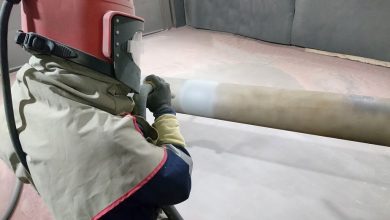Instructions to keep voles out of the Yard

Index Of The Blog
A great many people have known about moles yet might be new to voles. Family members of hamsters and lemmings, voles are little, mouse-like rodents that live in the wild and can do a great deal of harm to trees, yards, and nurseries. In North America and Australia, they are now and again alluded to as knoll or field mice. Voles share numerous attributes with moles yet are more ruinous to plants; moles normally feed on grubs and worms.
Voles develop clear cut, bungling passages, or “runways” at or close to the outside of the ground, around 2 inches wide. The runways result from the voles eating vegetation, similar to the foundations of grass and perennials, just as from the steady traffic of various little feet beating a similar way. Furthermore, if any yard and nursery irritation can in a real sense “beat a way” through the grass because of their sheer numbers, it’s the vole.
Voles can tunnel into the root frameworks of arranging bushes and trees, making youthful examples lean or to encounter dieback. These rat vermin will likewise chew on a tree’s trunk and at the foundation of a bush. Furthermore, voles harm the foundations of perennials, for example, hosta plants, spring bulbs, and the root crops in the nursery, like potatoes. Primarily, be that as it may, voles eat the stems and pieces of turf. Also, the runways they abandon in the process make for an unattractive yard.
There are more than 100 vole species, and most sorts measure somewhere in the range of 4 and 8 inches in length (counting the tail) and have earthy colored or dim hide. They weigh just around two ounces yet can eat their body weight in a solitary day. Voles resemble a hybrid of a mouse and a hamster, with lavish hide and little, adjusted ears.
Read: How To Get Rid Of Pack Rats
Four Ways to Get Rid of Voles
In the event that your arranging is as of now being harmed by voles and avoidance and counteraction measures have been fruitless, you may have to think about vole annihilation. Voles can be taken out sympathetically from a yard by utilizing live snares, or they can be eliminated with mouse traps or lure traps (which use harms). They can likewise be stopped by fencing and driven away with vole anti-agents.
Catching Voles with Mouse Traps
Rat snap traps can be utilized to kill voles. Spot the snare opposite to a vole runway, adjusting the snare’s trigger with the way the vole should take in utilizing the runway. Peanut butter is an amazing snare for catching voles. The best an ideal opportunity to trap is either fall or pre-spring.
The way to achievement in catching is figuring out where on your scene the voles are destined to use as a lane; that is the place where you need to find the snare. The greatest vole runways are characteristic of substantial traffic. Another great pointer is a runway that is vigorously dirty with vole pee and dung.
Eliminating Voles with Live Traps
On the off chance that you don’t really want to kill vole bothers, you can endeavor to trap them in live snares, (for example, Havahart traps) and move them to a suitable area. Be that as it may, moving bug rodents is limited or precluded in numerous spaces, so check with neighborhood specialists prior to utilizing live snares.
For best outcomes, utilize a live snare intended for little rodents that has two openings. Spot the snare straightforwardly in the way, and corresponding to, an obvious surface runway (similar to an extension on a street). Goading isn’t generally important, yet you can add peanut butter inside the snare whenever wanted. Check the snare as often as possible, and migrate any caught voles to a supported area at any rate 5 miles from your home.
Repulsing Voles with Chemicals
Thiram-based vole anti-agents, like Shotgun Deer, Bobcat pee, and Rabbit Repellent might be powerful against these bugs, yet repellants should be reapplied much of the time since they disperse with downpour. After a few applications the voles become acquainted with the smell, decreasing the viability of the anti-agents. Thiram ought not be utilized on garden plants. Hunter pees are frequently liked as vole anti-agents as they are the most disappointing to voles. Fox and coyote pees can regularly be bought on the web and at homestead and nursery focuses..
Preventing Voles with Fencing and Gravel
Wire network garden fencing (equipment material) can be folded over the foundation of a youthful tree in winter to hold voles back from troubling its bark. Nursery fencing can likewise be set around garden plants, to ensure their foundations against voles. Make a point to cover all fencing at any rate 6 to 10 creeps beneath the ground surface to keep voles from tunneling under.
Moreover, voles despise crossing sharp rock. When planting perennials or bulbs, add a coarse substance, as perlite or sharp rock, in the base and up the sides of the opening at planting time to secure the roots and bulbs. Plant garlic in the bulb and enduring beds to help repulse voles, as they hate the fragrance.
What Causes Voles?
Voles are drawn to yards and nurseries by food sources and places to cover up. In contrast to mice and rodents, they don’t ordinarily look for cover within structures. Voles show up in finished regions in more prominent numbers during moderately gentle however cold winters. You are destined to see harm when nearby populaces top, which can happen consistently every three to five years. A solitary female vole can deliver 15 to 50 youthful each year. These rodents normally live around a year. Voles home in lush clusters over the ground or in burrows expanding a few crawls subterranean.
The most effective method to Prevent Voles in Your Yard and Garden
A vole bother issue is well on the way to emerge in yards where voles have bountiful measures of vegetation and flotsam and jetsam to cover up under and construct their homes. On the off chance that you keep your nursery weeded, try not to plant thick ground covers (like crawling junipers), and keep your yard cut, you’re less inclined to need to stress over voles. That is the main guideline of incorporated vermin the board (IPM): forestall bother issues through prescience, as opposed to trusting that harm will happen that requires bug control.
However, it’s difficult vegetation that voles take cover under. Since vole chewing will make harm trees and bushes, you must be especially cautious about applying mulch excessively near trees and bushes. Voles will be encouraged by the presence of a profound layer of mulch. Indeed, even in winter, you’re not without home concerning potential vole harm; voles will utilize snow as cover to execute a subtle assault on your finishing. So attempt to keep snow cleaned up from bushes and youthful trees. You can likewise secure youthful trees by wrapping the lower trunk with wire network. While voles regularly devour roots, they may chew on a tree’s or bush’s bark simply above soil line. On the off chance that they harm the bark right around the storage compartment or fundamental stems (called supporting), it can kill the plant.
Voles versus Moles
Since voles are not by any means the only creature bothers answerable for runways in yard and nursery regions, they are frequently mistaken for different irritations you’d prefer to dispose of—in particular, moles. Since the two moles and voles are infrequently seen, it bodes well to put together ID with respect to the signs they leave behind instead of on how the creatures look.
While vole presence is shown by over-the-ground runways, the movement ways of moles are underground, and there are two sorts. One sort runs just underneath the surface. These are taking care of passages and show up as raised edges stumbling into your yard. The second sort of mole runway runs further and is utilized to join the taking care of passages into an organization. It is the dirt unearthed from the profound passages that mortgage holders find on their yards, stacked up in hills that take after little volcanoes. These hills are obvious that your concern isn’t voles, however moles. Voles don’t leave hills of soil on the ground’s surface.
For more clarity about traps: Best Rat Trap












